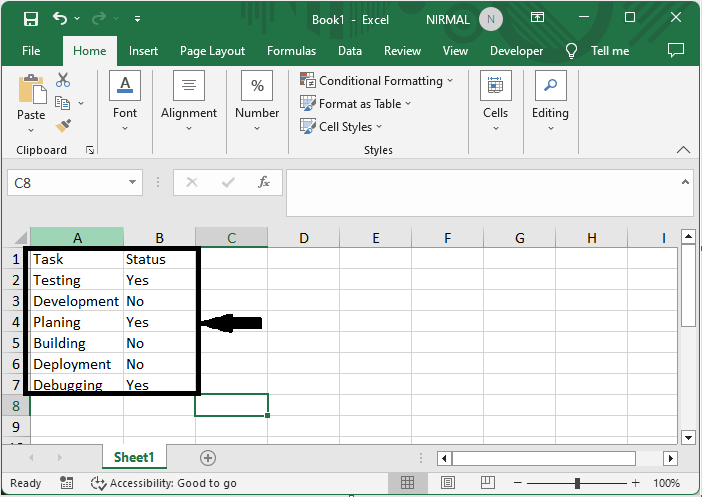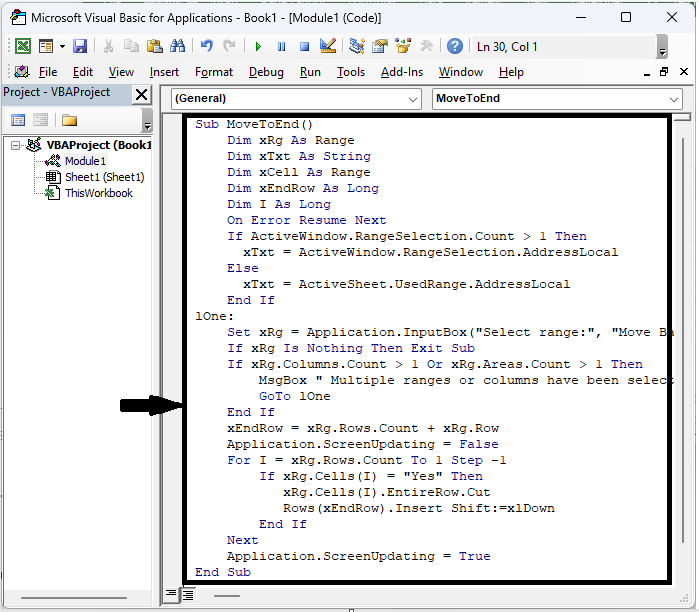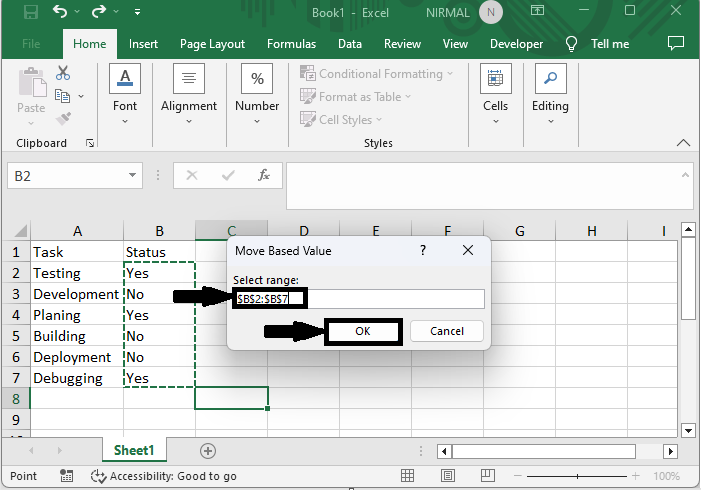
 Data Structure
Data Structure Networking
Networking RDBMS
RDBMS Operating System
Operating System Java
Java MS Excel
MS Excel iOS
iOS HTML
HTML CSS
CSS Android
Android Python
Python C Programming
C Programming C++
C++ C#
C# MongoDB
MongoDB MySQL
MySQL Javascript
Javascript PHP
PHP
- Selected Reading
- UPSC IAS Exams Notes
- Developer's Best Practices
- Questions and Answers
- Effective Resume Writing
- HR Interview Questions
- Computer Glossary
- Who is Who
How to Move Entire Row to the Bottom of Active Sheet Based on Cell Value in Excel?
This tutorial will show you how to rearrange rows in an Excel spreadsheet depending on predetermined criteria using a straightforward yet powerful technique. There are many situations where Excel data needs to be sorted or rearranged. To prioritise or separate specific rows from the rest of the data, for example, you could wish to place them to the bottom of the sheet. This tutorial's main goal is to accomplish this by selecting which rows to relocate based on a cell value.
We'll assume you have a fundamental understanding of Excel and its features going into this course. By the conclusion, you will be able to effectively organise your data in Excel because you will learn exactly how to move entire rows to the bottom based on cell values. then let's get going!
Move Entire Row to the Bottom of Active Sheet Based on Cell Value
Here, we will first create a VBA module and then run it to complete the task. So let us see a simple process to know how you can move an entire row to the bottom of the active sheet based on a cell value in Excel.
Step 1
Consider an Excel sheet where the data in the sheet is similar to the below image.

First, right-click on the sheet name and select View code to open the VBA application.
Right Click > View Code.
Step 2
Then click on Insert and select Module, then copy the below code into the text box.
Insert > Module > Copy.
Code
Sub MoveToEnd()
Dim xRg As Range
Dim xTxt As String
Dim xCell As Range
Dim xEndRow As Long
Dim I As Long
On Error Resume Next
If ActiveWindow.RangeSelection.Count > 1 Then
xTxt = ActiveWindow.RangeSelection.AddressLocal
Else
xTxt = ActiveSheet.UsedRange.AddressLocal
End If
lOne:
Set xRg = Application.InputBox("Select range:", "Move Based Value", xTxt, , , , , 8)
If xRg Is Nothing Then Exit Sub
If xRg.Columns.Count > 1 Or xRg.Areas.Count > 1 Then
MsgBox " Multiple ranges or columns have been selected ", vbInformation, "Move Based Value"
GoTo lOne
End If
xEndRow = xRg.Rows.Count + xRg.Row
Application.ScreenUpdating = False
For I = xRg.Rows.Count To 1 Step -1
If xRg.Cells(I) = "Yes" Then
xRg.Cells(I).EntireRow.Cut
Rows(xEndRow).Insert Shift:=xlDown
End If
Next
Application.ScreenUpdating = True
End Sub
In the VBA code, "Done" is the cell value you will move the entire row based on. You can change it as you need.

Step 3
Then click F5 to run the module. Then select the range of cells and click OK to complete the task.

This is how you can move an entire row to the bottom of the active sheet based on a cell value in Excel.
Conclusion
In this tutorial, we have used a simple example to demonstrate how you can move an entire row to the bottom of the active sheet based on cell value in Excel to highlight a particular set of data.

